February Recap
In case you missed it you can find last month's newsletter here: february newsletter
february migratory bird spotlight & member submissions (migratory)
Last month's activity/theme was finding migratory birds who make the bay their winter home.
First up a few of us birders headed to the north bay to do some marsh hopping in hopes of finding
shorebirds and waterfowl. I brought my camera but forgot the sd card so
in lieu of photos I'll instead share a couple of ebird checklists:
marsh 1
and marsh 2.
We saw pretty good diversity spotting roughly 25 species at each of the two spots we stopped at.
The highlights for me were the white-tailed kite (Elanus leucurus), northern harrier(Circus hudsonius),
the forster's terns (Sterna forsteri), and what I think was somehow a nesting pair of mute swans(Cygnus olor).
A lot of the birds we spotted were winter visitors including some common mergansers (Mergus merganser),
tons of buffleheads (Bucephala albeola), greater yellowlegs (Tringa melanoleuca),
and a boatload of cackling geese (Branta hutchinsii).
Also as a fun little bonus we spotted a pacific gopher snake (Pituophis catenifer catenifer) and some river otters (Lontra canadensis).
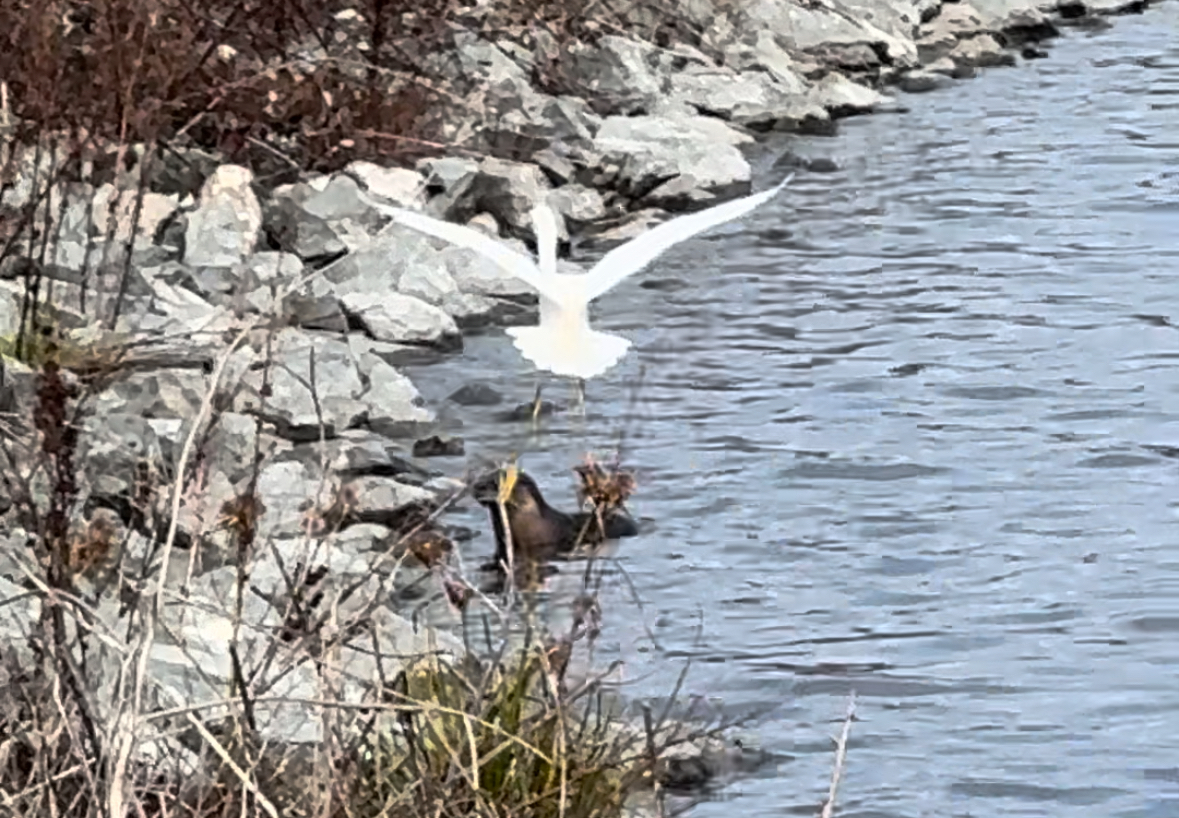
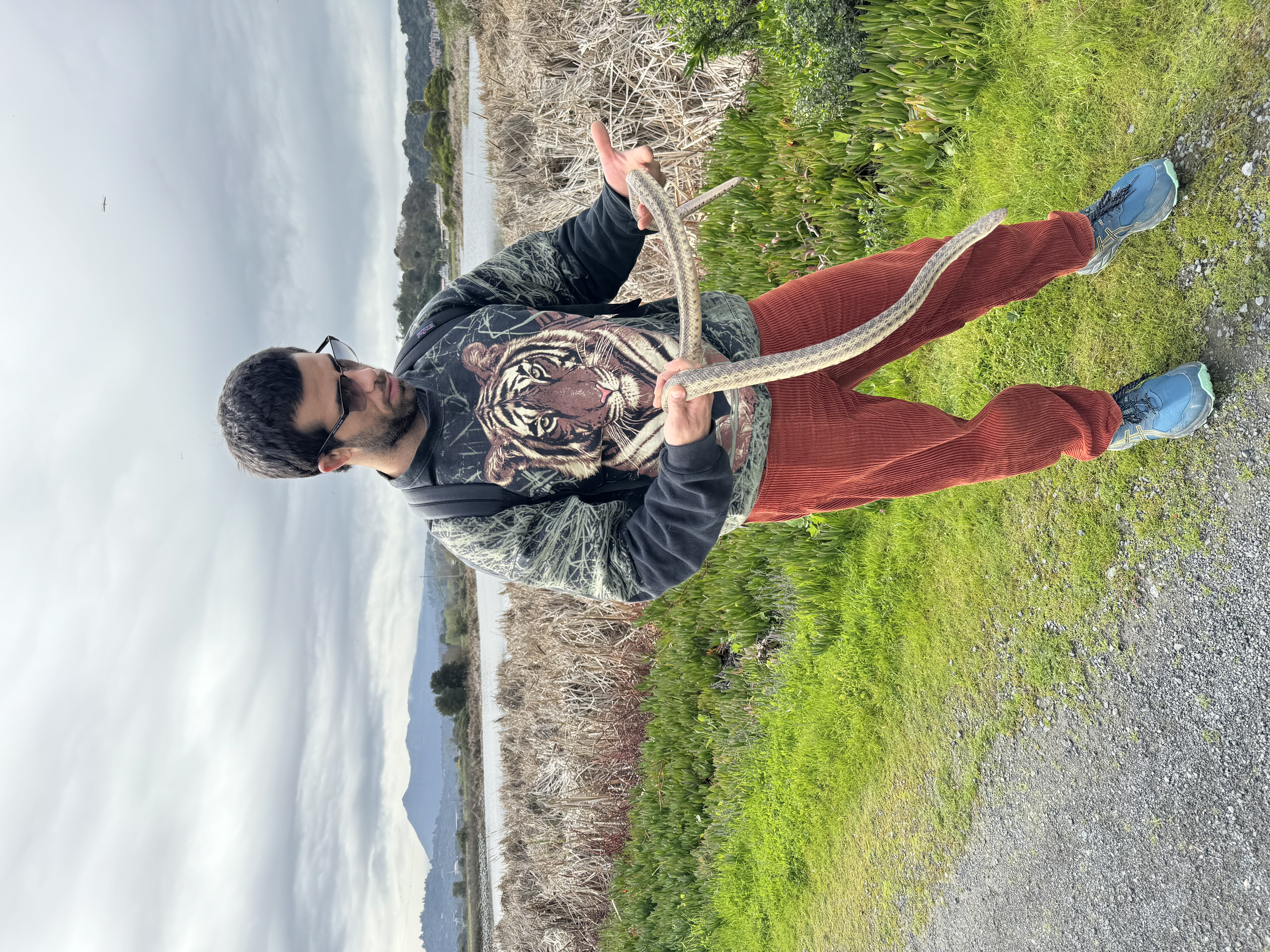

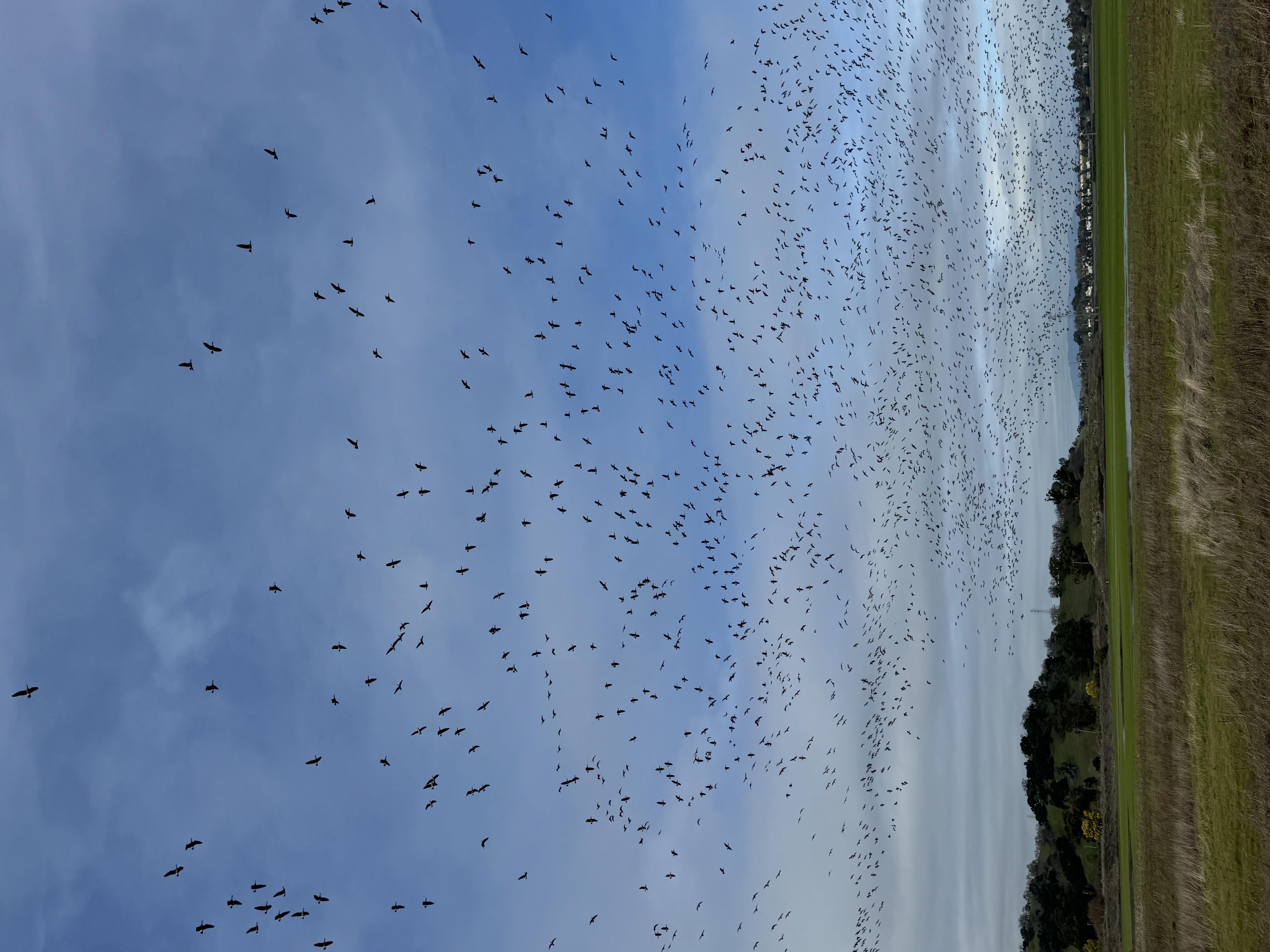
people also spotted some winter birds on other outings
In addition to the buffleheads mentioned in the marsh outing Adam and I spotted some in Golden Gate park. I love watching these guys dive under again and again they're relentless

Janet spotted a Townsend's Warbler (Setophaga townsendi) in downtown SF.

I spotted some cedar waxwings (Bombycilla cedrorum) in a tree in the east bay. I don't see these guys often but I think they are one of the most beautiful birds we can find here in the winter.
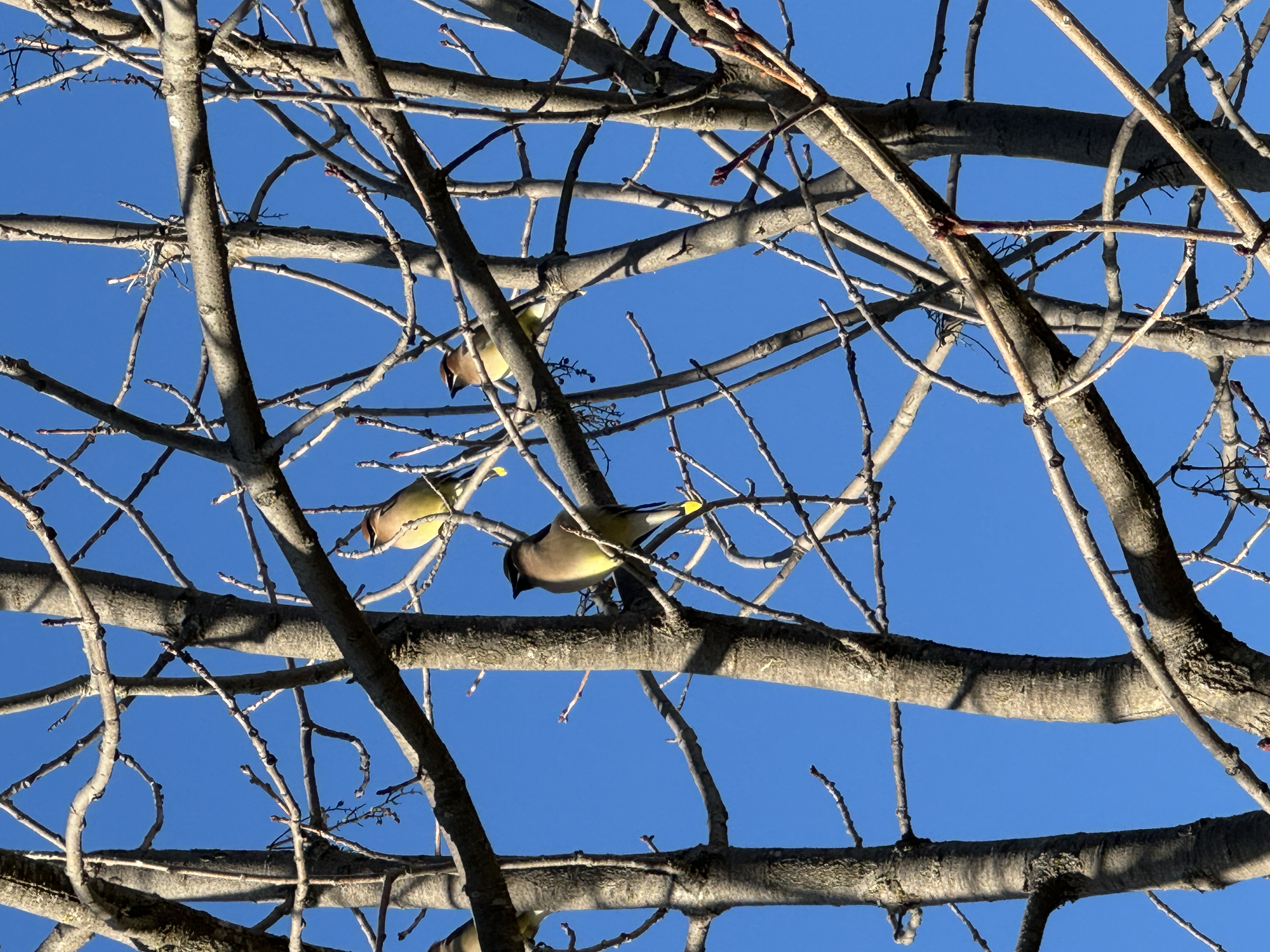
I also saw plenty of birds on a non-birding related weekend trip to Carmel including some surf scoters (Melanitta perspicillata). Very fun bird to sit and watch; they float around all nonchalant like waiting for a wave to break right on top of them and then dive under water at the last second. If I could try out being any bird the surf scoter would have to be up there towards the top of my list. They look a bit strange with their see-through bill thingie, but oddball looks aside they seem like they have a good time. Always be on the lookout for this trait when birding; you'll find some birds like to have a good time and others less so. I'm pretty sure the surf scoters are in the former category.
Another birder and I went to ocean beach on a friday evening for non-birding related reasons but we did spot some of the sanderlings (Calidris alba) I mentioned in the last newsletter.
Member Submissions (non-migratory)
Thank you to everyone who sent me photos of the birds they saw! In addition to the migratory birds shown above some people also spotted some of the birds we see here year-round.
Sarah sent in a photo of an American Robin (Turdus migratorius)

George and Megan spotted some Northern Flickers (Colaptes auratus) in a tree in the east bay. The buffleheads make their homes in the cavities dug by these guys!

Spotlight Bird: Surf Scoters (Melanitta perspicillata)
So I was going to choose a different bird but I geeked out pretty hard on the surf scoters I spotted in Carmel. I thought they were called scooters not scoters and that contributed to the coolness but scoter is still a cool name.
Fun Surf Scoter Facts:
- they're only here for the winter; in the summer they breed super far north up in canada and alaska
- they are a bit strange looking:

picture of a surf scoter from Matt Davis from Macaulay Library - notice that hole in the bill? the specific name perspicillata is latin for spectacled which comes from the latin perspicere which means to see through. also the genus name Melanitta translates to black duck in ancient greek
- they molt their feathers before migration and to do this they leave their nesting sites and go somewhere else where it's safe because they become temporarily flightless
- like i mentioned earlier in the newsletter they are very fun to watch dive under waves; they wait until the last possible moment when the wave is about to break on top of them before diving underneath
- they eat things on the ocean floor like mussels and clams but also other things like herring spawn
Bird Nests
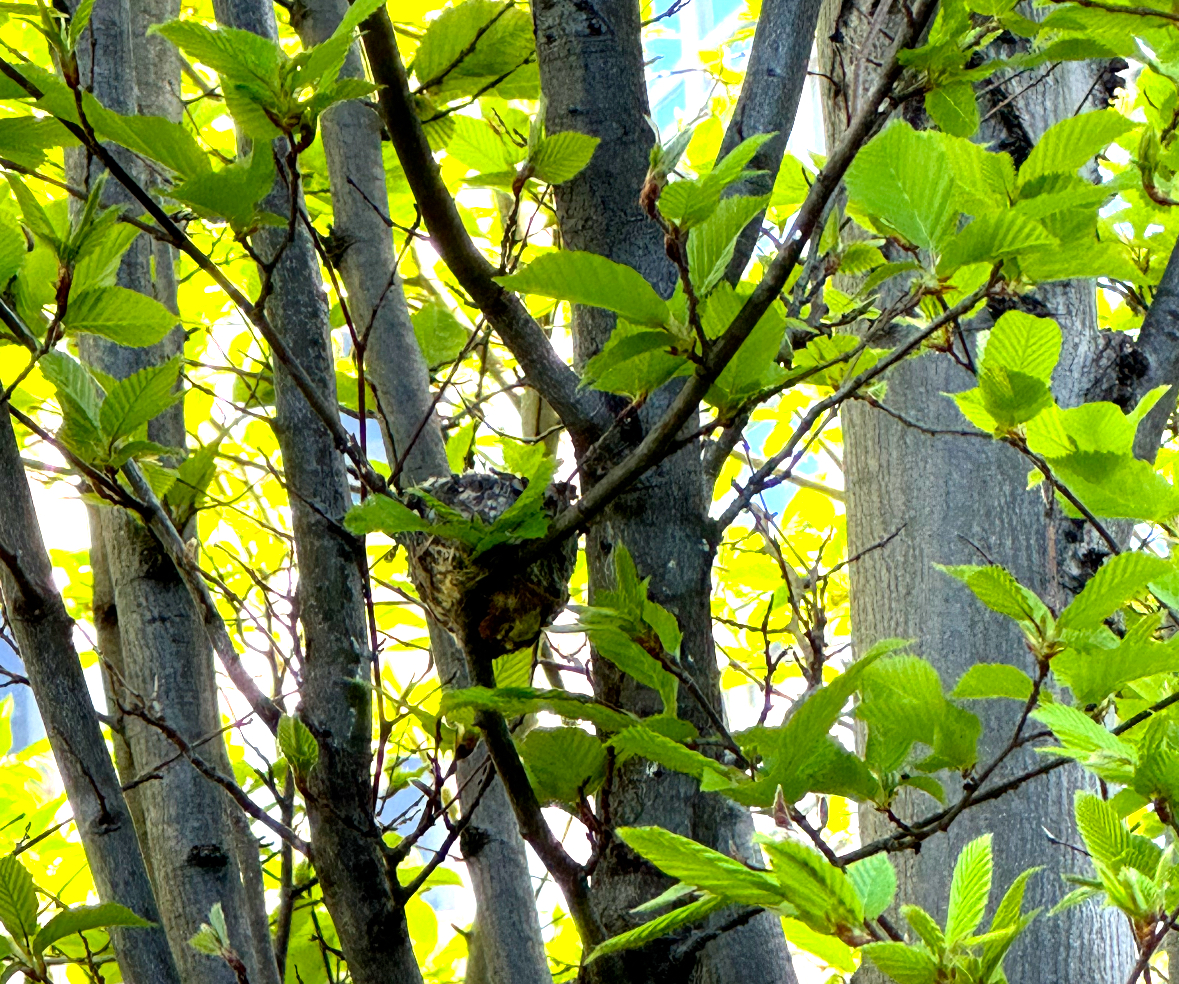
I've been thinking about bird nests recently after listening to the recent ABA podcast episode that talked about
the NYT article
discussing the recent university of chicago study
on snake skin in cavity bird nests.
It found that using snake skin in cavity nests reduced risk of nest predation.
Pretty cool!
I grew up getting to see house finch nests in my Nannu's yard and while not the most intricate nests,
for a good example of an intricate nest check out a bushtit nest!, I was still impressed by how these birds were able to take twigs and cat hair and
little scraps of whatever they found to build these beautiful little nests.
So the activity for this month is to try spot some bird nests. I'm no expert on bird nests and
I'm not really sure if March is the best time to find a good variety of nests here in the bay,
but there should still be some opportunities if you look close enough:)
Closeout
That's all; happy birding